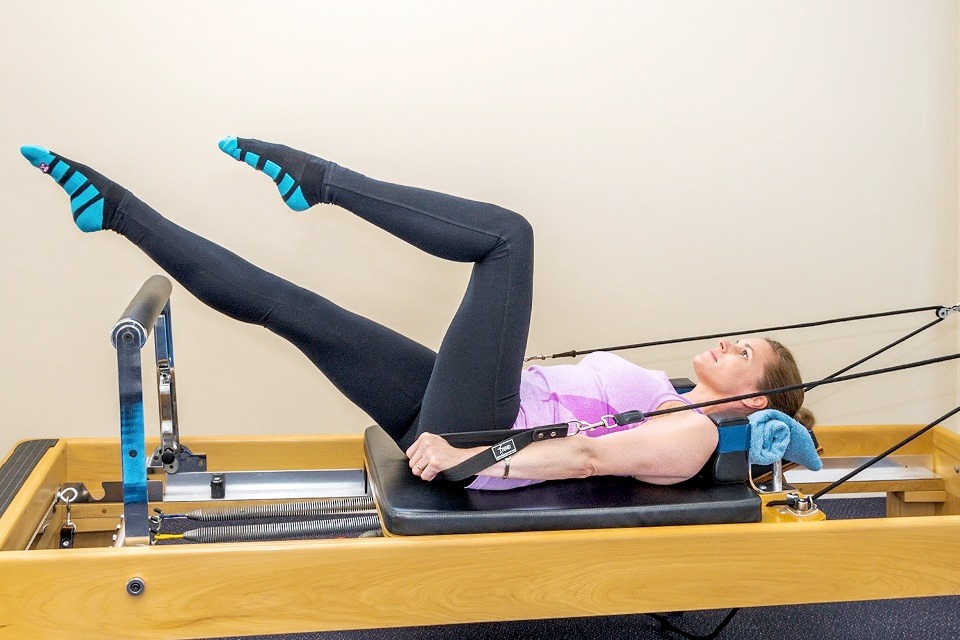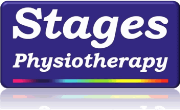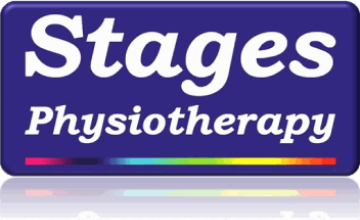At Stages Physiotherapy, we assist with healing, pain relief and movement for a wide range of ailments including:
- Acute injuries (whiplash, sprains, strains)
- Chronic conditions (neck pain, lower back pain, sciatica, tennis elbow, TMJ, foot pain, lymphoedema)
- Pain relief management
- Balance/falls prevention/enhance mobility/BPPV (vertigo)
- Strength work/muscle conditioning/spinal stability
- Pre & post-operative care
- Pelvic floor/incontinence
- Antenatal/postnatal care
- Breathing/respiratory enhancement
- Neurological recovery and stabilisation
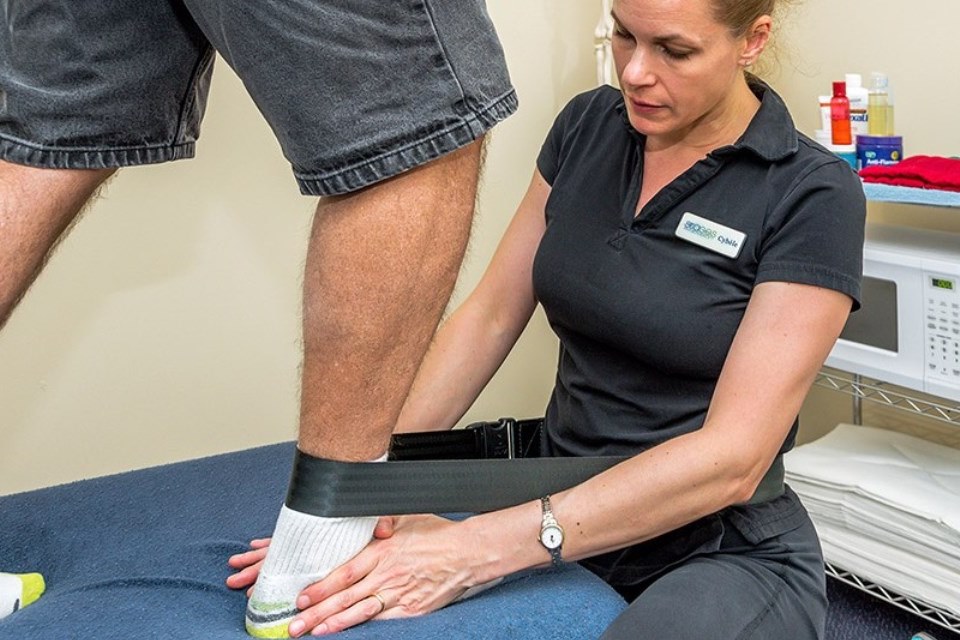
Types of Treatment
The choice of treatment depends on the assessment findings by the physiotherapist and is chosen for each individual patient.
Treatment may consist of any or a combination of the following:
- Joint mobilisation/manipulation
- Dry needling
- Remedial massage therapy
- Electrotherapy (IFT, TENS, US)
- Heat or cold therapy
- Strapping/bracing/taping
- Home exercise programs
- Pilates equipped gym for rehabilitation
- Education(condition, posture, ergos, safety)
- Hydrotherapy plans
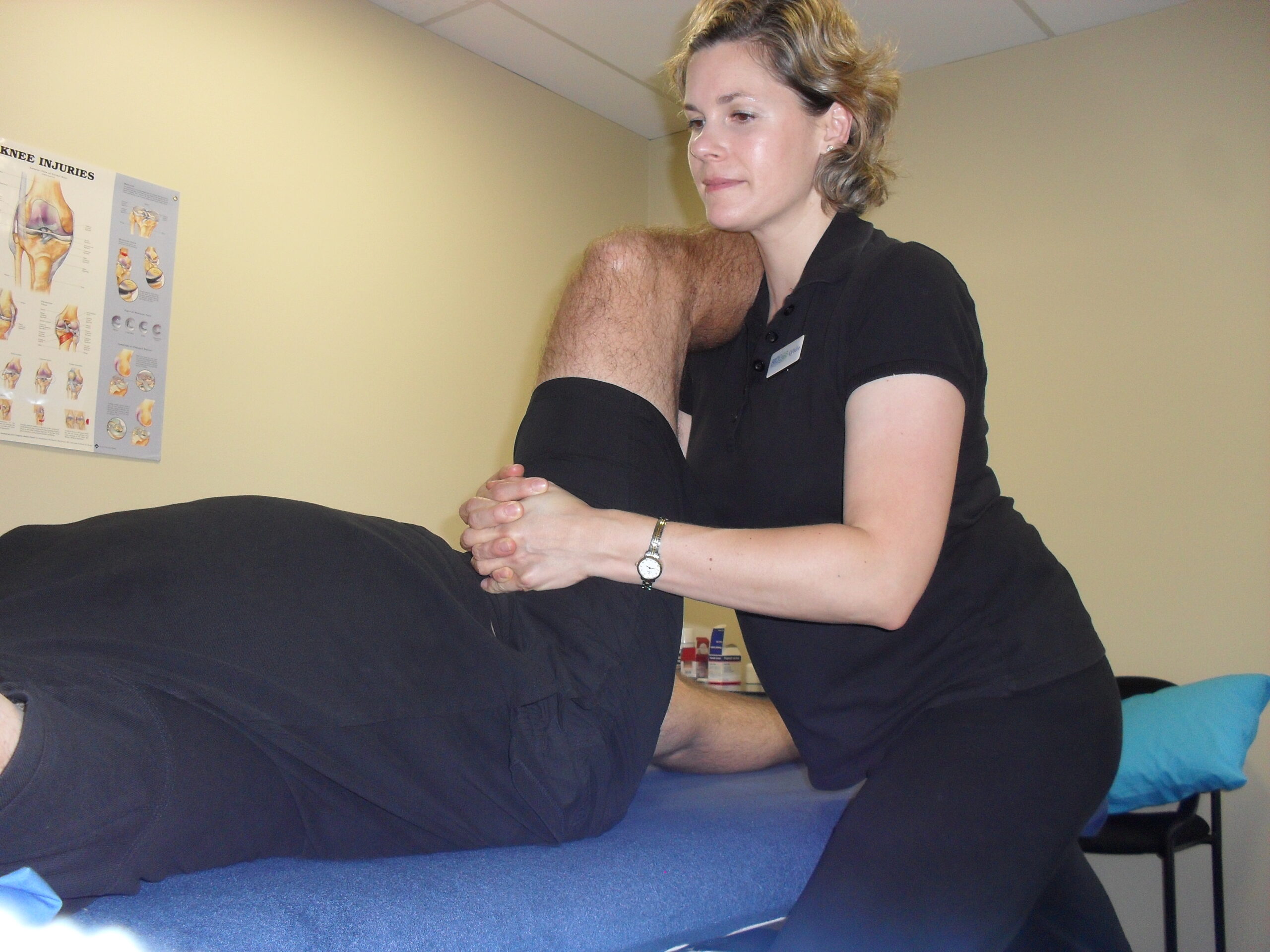
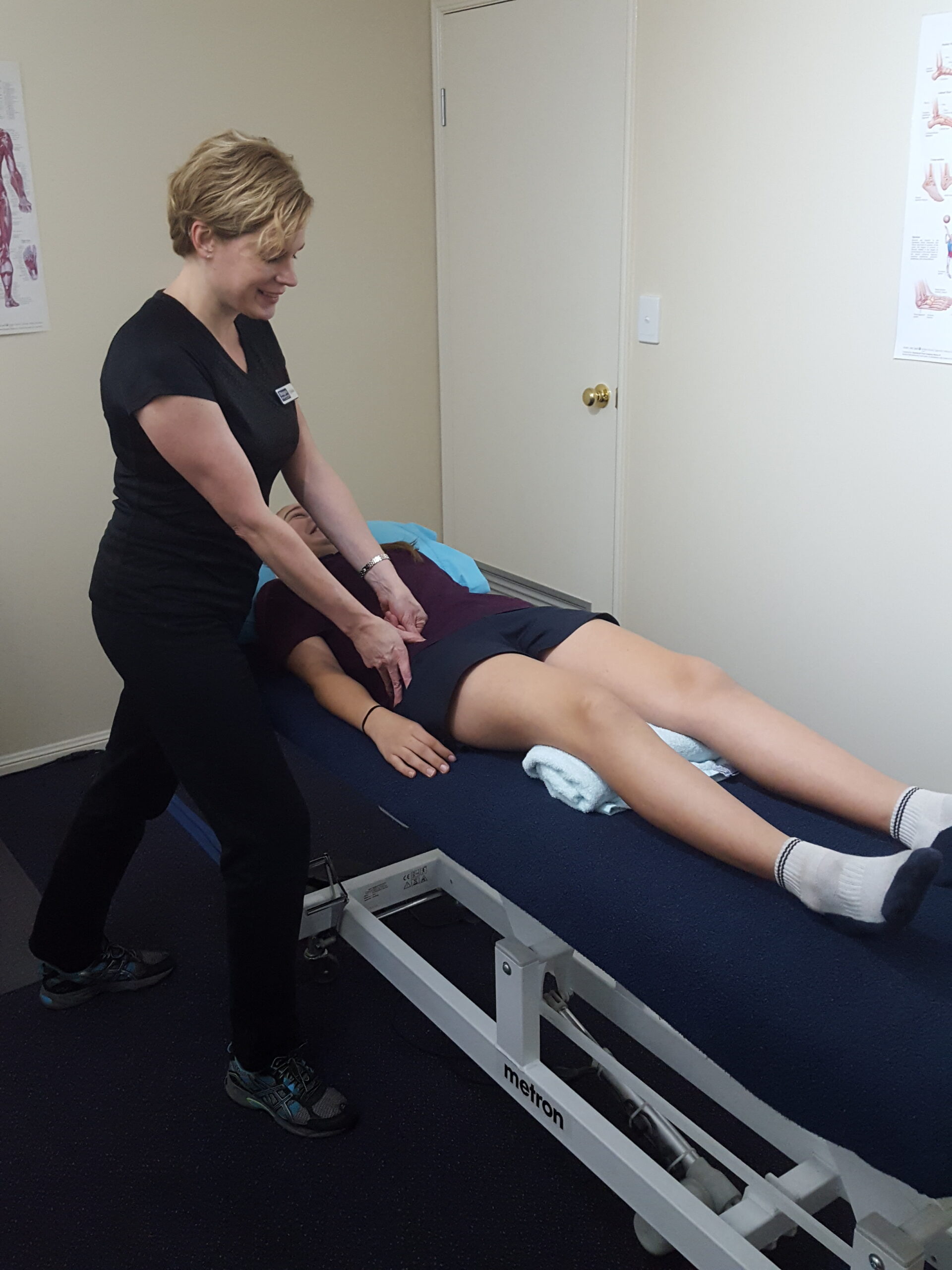
Manual Therapy
Consists of manual medicine techniques treating musculoskeletal conditions; conditions related to the muscles, bones, joints, connective tissues such as tendons and ligaments, spinal discs and the nervous system to enable them to all work together. This hands-on way of assessment & treatment is the most accurate way a therapist can evaluate and treat the condition of a patient.
- Palpation is touching of part of the body to get a sense of size, shape, firmness and location of the condition.
- Joint mobilisation is thought to help maintain or improve extensibility and tensile strength of the articular tissues, reduce the effects of mechanical limitations, elongate stiff capsules, ligamentous and connective tissue. It also stimulates mechano-receptors in the nervous system and therefore may be responsible for reducing pain.
- Manipulation is the highest level of mobilisation performed as a high velocity thrust at the end of a joints range, the ‘pop’ or ‘click’ sound is indication of release in the pressure of the joint’s capsule.
- Massage is for the purpose of releasing tension of muscular tissue in order to increase blood flow, lymphatic drainage, improve flexibility and range of movement and reduce tension and stiffness all to improve the functionality of the muscle tissue.
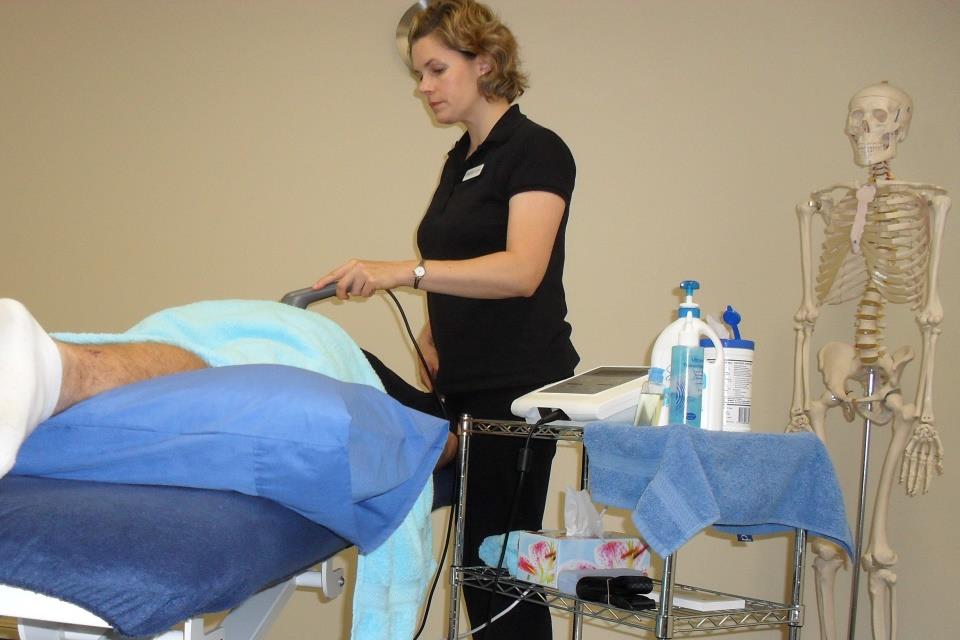
Electrotherapy
Electrotherapy is medical therapy using electrical currents.
- Therapeutic Ultrasound produces cavitation, microstreaming and acoustic streaming. Cavitational effects result from the vibration of the tissue causing microscopic air bubbles to form, which transmit the vibrations in a way that directly stimulates cell membranes. This physical stimulation appears to enhance the cell-repair effects of the inflammatory response. Therapeutic ultrasound is recommended for muscle as well as joint pain.
- Interferential Therapy is stimulation characterized by the crossing of two electrical medium, independent frequencies that work together to effectively stimulate large impulse fibers. These frequencies interfere with the transmission of pain messages at the spinal cord level. Because of the frequency, the Interferential wave meets low impedance when crossing the skin to enter the underlying tissue. This deep tissue penetration can be adjusted to stimulate parasympathetic nerve fibers for increased blood flow. Interferential Stimulation differs from TENS because it allows a deeper penetration of the tissue with more comfort (compliance) and increased circulation.
Heat/Cryo Therapy
- Heat Therapy can produce heating effects at a depth limited to 1-2cm. Heat assists in diminishing pain and decreasing local muscle spasm. Heat is generally not applied to an acute injury in the first 48 hours.
- Cryo Therapy or ice packs are generally more effective in terms of depth of penetration. Intramuscular temperatures can actually be reduced by 3-7 degrees C. This is helpful in reducing local metabolism, inflammation and pain.
Acupuncture and Dry Needling
- Western Acupuncture uses Traditional ‘meridian points’, but applies it to ‘Western’ methods of clinical analysis, relating to neurophysiology and anatomy. These points assist in relieving pain.
- Dry Needling is the use of tiny needles directed to injured or dysfunctional tissue, including myofascia trigger points and the bone lining, in order to restore and/or improve function. This is done by way of stimulating the nerve fibres, releasing histamine and serotonin and creating an anti-inflammatory effect and consequently a pain relieving effect.
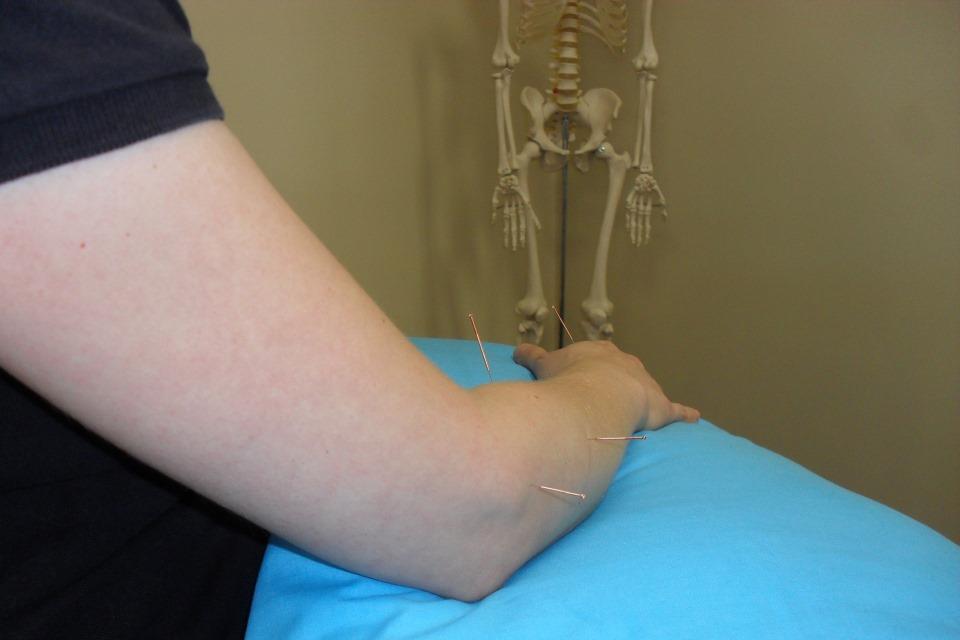
Clinical Exercise Rehabilitation
- Pilates was developed in the early 20th century by a man Joseph Pilates. His original method “Contrology” has been adapted by Physiotherapists and altered using safe, evidence based research techniques to provide a clinical foundation of exercises to use for patient rehabilitation.
- Home exercise programs are specifically designed exercises useful for ongoing care of a patient’s condition. During the in house treatment a physiotherapist may provide home exercises to supplement treatment, resulting in a short program for long-term care.
Pilates
Over the last 15 years physiotherapists have increasingly used Pilates as an effective form of rehabilitation. By applying modifications to the traditional exercises founded by Joseph Pilates, Physiotherapists have developed a safe form of rehabilitation to suit the needs of each patient. Pilates promotes deep muscle activation to enhance spinal stability, strength, flexibility and balance. Programming includes the use of spring resistance equipment in house and a series of mat work exercises which may incorporate stretch bands, balls or rollers.
